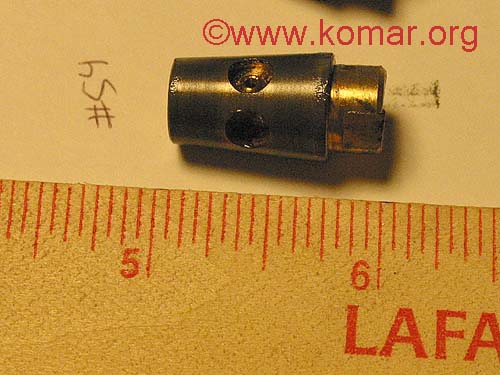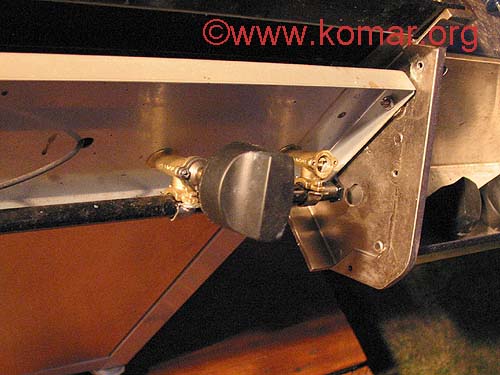
Remove the misc. stuff from the control valve and you will see two screws. Note "H" goes on the bottom for re-assembly.
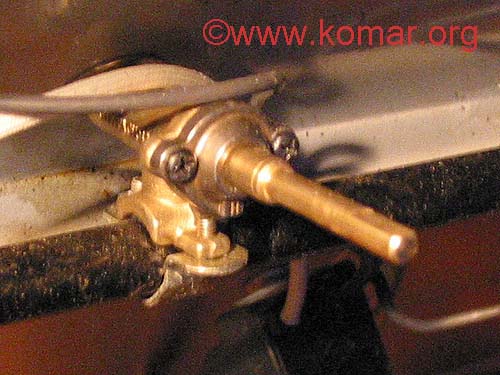
Remove those two screws and pull the assembly off. CAREFUL ... there is a spring and a "D-ring" in there. BTW, the "D-ring" was a pain to put back on correctly, so I just plastic cemented it in place. Note that you do NOT fiddle with the screws that attach the valve to the manifold.
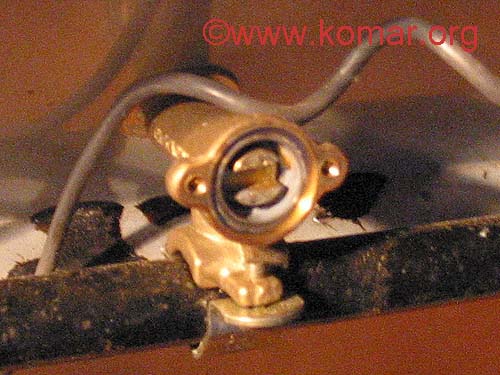
Remove the cone shaped piece of metal - sorry 'bout the fuzzy picture
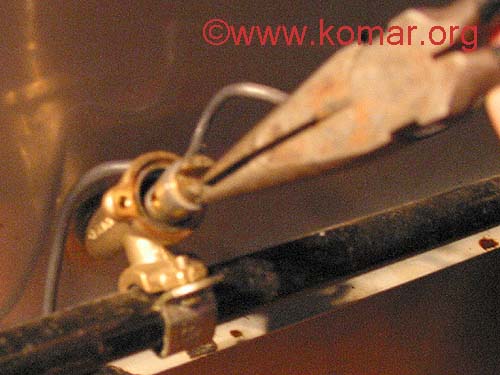
Take a look in here under good light and you'll see that gas flows from the manifold at the bottom through that cone shaped metal via its holes (see below) to the orifice at the back. Digicam macro was "hunting" a bit here also.
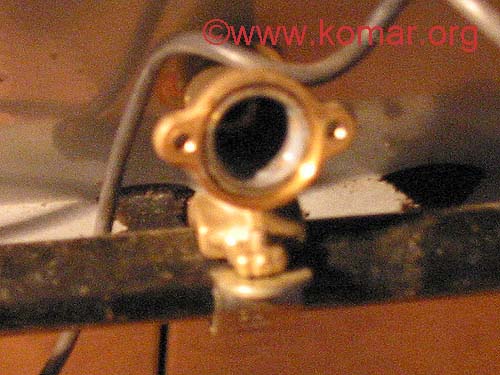
Here is all the pieces removed
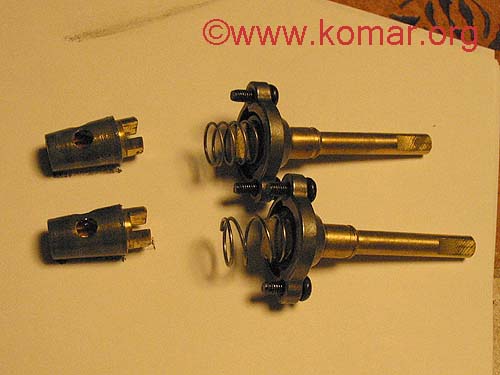
Here is what it looks like from the "other" side. Note the D-ring that seats in the cover (it is intentionally out of the groove now so more visible) is what limits the travel from OFF/HIGH/LOW. BTW, the back burner control valve is (basically) the same - the only difference being that the grooves on that cover only allow 90 degrees of travel, so just OFF/ON. As discussed elsewhere, you can either remove the D-ring, or drill out the groove to 170 degrees or so, and with appropriate adjustments, you now have a variable back burner.
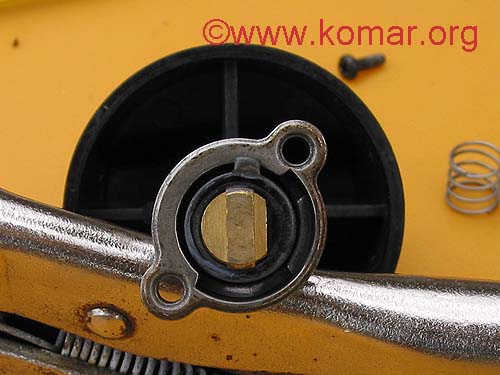
Here are those same three pieces seperated
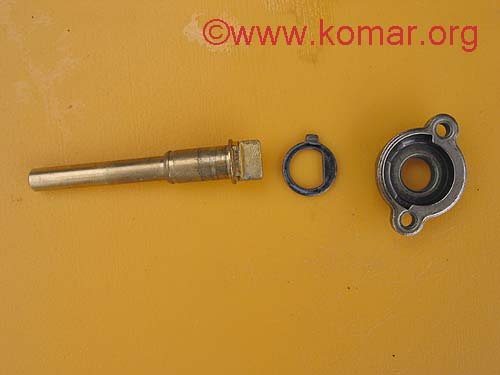
The holes on the left side of these two pieces are "large" and are used on the HIGH setting. As you rotate the control valve, it ends up using small hole at the LOW setting (obviousely smaller than the orifice itself). If you play with the pieces a bit, it will become pretty obvious how this works. The small hole was a little smaller than a #60 (0.040") as shipped for LP - I ended up drilling to #54 (0.055") for NG - it's not much different!
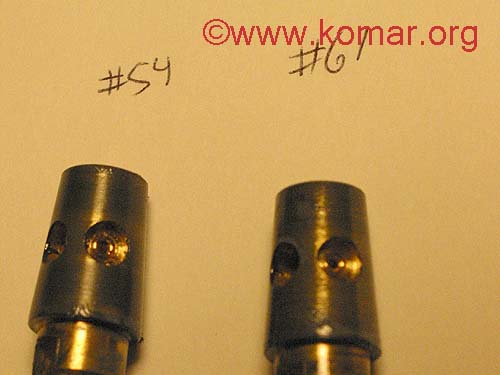
Here is a closeup kinda showing the large hole used by the HIGH setting. Gas flows through the holes to the open top to the orifice.
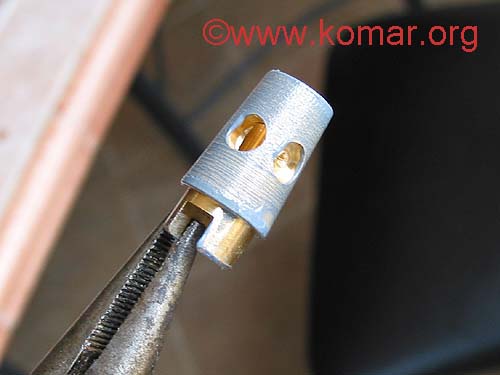
A REAL close-up. Note the grease ... this needs to rotate easily, so handle with needle nose pliers as shown as much as possible.
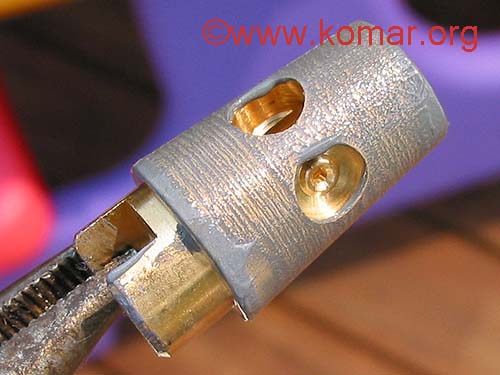
Not very big ... but pretty darn important. As noted, drill it out and reverse above procedure. Pay close attention to being consistant with the cone-shaped metal piece, D-ring (as noted, I plastic cemented this in place to make things easier), and valve (per picture above, the "H" is on the bottom) so that it's truly OFF/HIGH/LOW when assembled. Otherwise, you'll have to undo it and flip it 180 degrees; which I had to do a couple of times! ;-)
